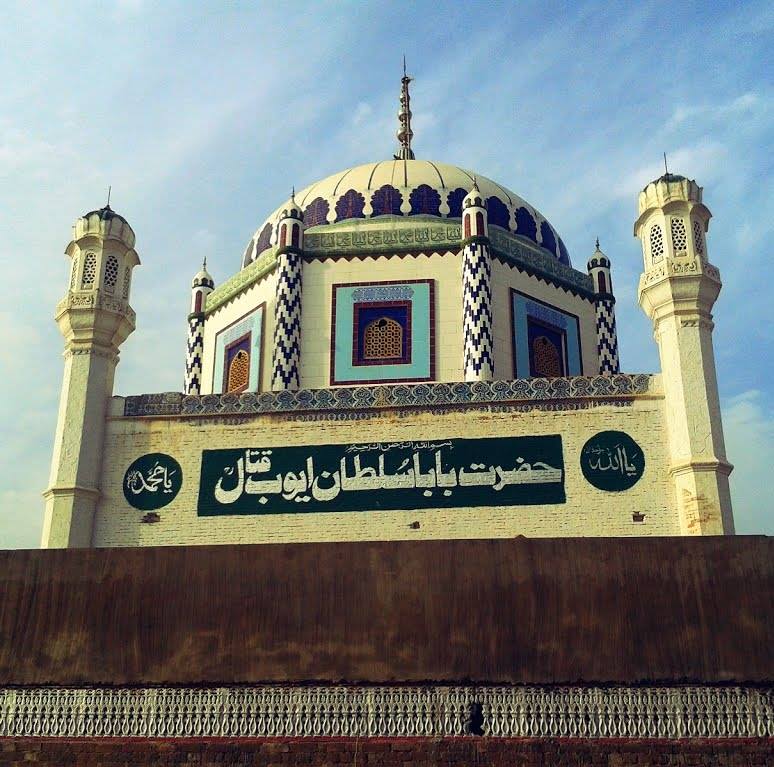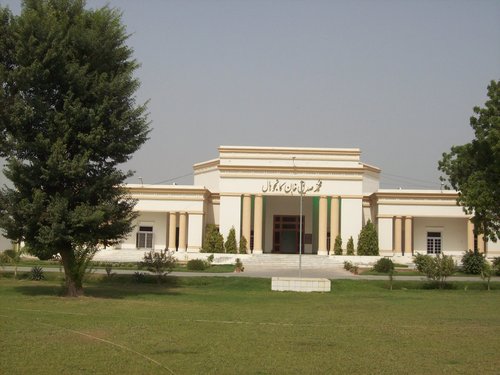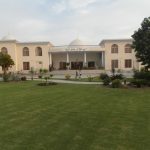English rulers first developed Lodhran city in the 18th century on the north side of the Sutlej River. The foundation of Lodhran was laid in 1830, and then in 1849, British Rule extended to Punjab. District Multan, including the area of Lodhran, also came under the sway of British Rule. Lodhran District was an agricultural region with forests during the Indus Valley Civilization. The Vedic period is characterized by Indo-Aryan culture that invaded Central Asia and settled in the Punjab region. The Kambojas, Daradas, Kaikayas, Madras, Pauravas, Yaudheyas, Malavas and Kurus invaded, settled and ruled the ancient Punjab region. After overrunning the Achaemenid Empire in 331 BCE, Alexander marched into the present-day Punjab region with an army of 50,000. Lodhran was ruled by Maurya Empire, Indo-Greek Kingdom, Kushan Empire, Gupta Empire, White Huns, Kushano-Hephthalites and Shahi Kingdoms.
In 997 CE, Sultan Mahmud Ghaznavi took over the Ghaznavid Dynasty Empire established by his father, Sultan Sebuktegin, In 1005, he conquered the Shahis in Kabul and followed it by the conquests of the Punjab region. The Delhi Sultanate and later Mughal Empire ruled the region. Punjab became predominantly Muslim due to missionary Sufi saints whose dargahs dot the landscape of the region of Punjab. After the decline of the Mughal Empire, the Sikhs invaded and occupied Lodhran District. Muslims living in the region faced severe restrictions during the Sikh rule. Raja Lodhra was the son of Sikh Raja Raam Dyo Minhas and his family claimed to be descendants of Sooraj Hansi Rajput. Lodha’s family lived in Bahawalpur. Lodhran city was first developed by English rulers in the 18th century on the north side of the Sutlej River. The foundation of Lodhran was laid in 1830, and then in 1849, British Rule extended to Punjab. District Multan, including the area of Lodhran, also came under the sway of British Rule. During the period of British rule, the Lodhran district increased in population and importance. In 1849, Multan District joined Lodhran making it a tehsil on 5 May 1883. Malik Ghulam Hussain Lodhra ‘zaildar’ suggested the name “Lodhran” for this area. At that time, there were only 19 villages in Lodhran and it was a tehsil of district Multan. This area was situated in Kot Peer Sa-aadat and the tehsil office had been working there for three years. Later, a tehsil office was built in Lodhran city. Munshi Abdul Wahid was the first superintendent of Lodhran.In August 1873, Sadar Police Station was founded; in 1885, the Railway Station was founded. On the 1st of April, 1909, the British Government opened a railway line from Lodhran to Karachi. In 1924, the areas of Kehror Pacca and Dunyapur were separated from tehsil Mailsi and included in tehsil Lodhran. A settlement operation was started in 1873 and concluded in April 1875. At that time, tehsil Lodhran comprised the following villages: Riddan Wala, Mari Bhago Khan, Omer Pur, Mochi Mohana, Beli, Lahori, Fateh Pur, Khan Pur, Khan Wah Ghalwan, Gogran, Motha, Kot Lal Shah, Karam Ali Wala, Lutaf Pur, Wighamal, That Ghalwan and Lodhran.In 1881, a series of changes were made with the objective of enlarging the Shujabad and decreasing the Mailsi charge. Under these arrangements, 60 villages in the neighbourhood of Kahror Pakka were transferred from the Mailsi to Lodhran tehsil. Further alterations were made in 1897, by which 46 villages were transferred from Lodhran to Shuja Abad, while 104 villages to the East of Kahror Pakka were taken over from Mailsi in compensation. Kahror Pakka and Dunya Pur were part of tehsil Mailsi and were annexed with Lodhran in 1924. Lodhran was a desolate place but a cultivatable, level tract of land. In 1920, the British Government made a plan to populate the region. Therefore, different land estates were divided among the people of other areas. The Fauji Grant and Tube Scheme increased the population of the region as well. Hence, the population of this region increased swiftly. The predominantly Muslim population supported Muslim League and Pakistan Movement. After the independence of Pakistan in 1947, a minority of Hindus and Sikhs migrated to India while the Muslim refugees from India settled in the Lodhran District. To educate the young generation and to spread knowledge, there are uncountable institutions, schools and colleges in Lodhran. Many government, semi-government and non-government girl’s and boy’s primary and high schools, inter-commercial institutes, vocational institutes and colleges are working to educate the people. There are also many hospitals in Lodhran. It is the 32nd district of Punjab which is situated between the Sutlej and Beas rivers, which form its borders. The Beas River is dry, but the Sutlej River still flows.
Places to Visit
Sultan Ayub Qattal Shrine
The Shrine of Hazrat Makhdoom Sultan Ayub Qattal is located in Dunyapur, District Lodhran. Grandson of Hazrat Makhdoom Abdul Rasheed Haqqani.

Kanjo Hall
Kanjo Hall is one of the most popular places in Lodhran District. It is located in Lodhran city where cultural and public events of all categories are held from time to time. Kanjo hall was built in 1995 and named after the prominent personality of District Lodhran Saddique Khan (Late), a Politician.

Railway Station
Lodhran Railway Station is one of the major railway stations of Pakistan Railways on the Karachi-Peshawar main line. The station is properly staffed and has advanced reservation offices. Food stalls are also located on its platforms. The routes are from Lodhran linked to Karachi, Lahore, Rawalpindi, Peshawar, Quetta, Multan, Faisalabad, Sargodha, Sialkot, Gujranwala, Hyderabad, Sukkur, Jhang, Rahim Yar Khan, Nawabshah, Attock, Sibi, Khanewal, Gujrat, Rohri, Jacobabad, and Nowshera.



